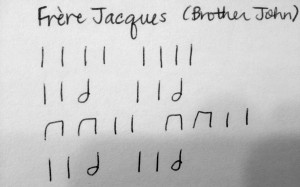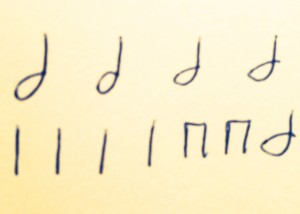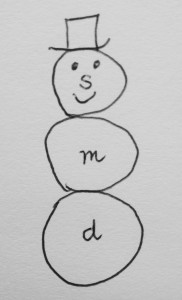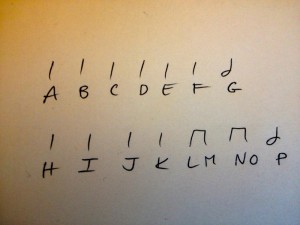Music can help us express how we experience the world around us. I especially enjoy music about the weather! Here is a list I found today of some great songs that reflect the many moods of our natural world (google any one of these to find a video you enjoy!):
Seasons
Antonio Vivaldi – “The Four Seasons”
Astor Piazzolla – “Cuatro Estaciones Porteñas,” or “Four Seasons of Buenos Aires”
Joseph Haydn – “The Seasons”
Alexander Glazunov – “The Seasons,” Op. 67
Piotr Tchaikovsky – “The Seasons,” Op. 37b
Jean-Baptiste Lully – “Les Saisons”
John Cage – “The Seasons” (1947 ballet score for Merce Cunningham)
James DeMars – Piano Concerto, “The Seasons”
Charles-Valentin Alkan – “Les Mois”
By individual seasons
Spring
Robert Schumann – Symphony No. 1, “Spring”
Johann Strauss II – “Voices of Spring,” waltz
Christian Sinding – “Rustle of Spring”
Edvard Grieg – “To Spring”
Igor Stravinsky – “The Rite of Spring”
Ludwig van Beethoven – Violin Sonata No. 5, Op. 24, “Spring”
Richard Strauss – “Fruhling,” from “Four Last Songs”
Benjamin Britten – “Spring Symphony”
John Knowles Paine – “In Spring,” symphony
Claude Debussy – “Rondes de Printemps” for orchestra, from “Images”
Aaron Copland – “Appalachian Spring”
Richard Wagner – “Du bist der Lenz,” from “Valkyrie”
William Bolcom – “Spring Concertino” for oboe and small orchestra
Summer
Felix Mendelssohn – “Midsummer Night’s Dream” overture and incidental music
Hector Berlioz – “Les Nuits d’Ete,” song cycle
Autumn
R. Strauss – “September,” from “Four Last Songs”
Grieg – “In Autumn,” overture
Debussy – “Feuilles Mortes” or “Dead Leaves,” from Preludes, Book II
Winter
Tchaikovsky – Symphony No. 1, Op. 13, “Winter Dreams”
Franz Schubert – “Die Winterreise,” song cycle
Wagner – “Wintersturme,” aria from “Valkyrie”
Weather
Thunderstorms
Beethoven – Symphony No. 6, Op. 68, “Pastoral”
Gioacchino Rossini – Overture to “William Tell”
Wagner – Prelude to “Valkyrie”
Beethoven – Piano Sonata No. 17, Op. 31, No. 2, “Tempest”
Wagner – Opening of “Flying Dutchman”
Giuseppe Verdi – Storm in “Otello”
Vivaldi – Concerto “La Tempesta di Mare”
Berlioz – “Royal Hunt and Storm,” from “Les Troyens,” Act IV
Earthquake
Haydn – “Four Last Words of Christ”
Avalanche
Alfredo Catalani – Opera “La Wally” ends with an avalanche
Sunrises
R. Strauss – opening of “Thus Spake Zarathustra”
Maurice Ravel – “Daphnis et Chloe”
Haydn – Symphony No. 6, “Morning”
Ferde Grofe – “Sunrise,” from “Grand Canyon Suite”
Moonlight
Debussy – “La Terrasse des audiences du clair de lune,” from Preludes, Book II
Debussy – “Clair de Lune” for piano, from “Suite Bergamasque”
Beethoven – Piano Sonata No. 14, Op. 27, No. 2, “Moonlight”
Rain
Frederic Chopin – Prelude, Op. 28, No. 10, “Raindrop”
Debussy – “Jardins sous le pluie,” from “Estampes” for piano
Grofe – “Cloudburst,” from “Grand Canyon Suite”
Johannes Brahms – Violin Sonata No. 1, Op. 78, “Regenlied,” or “Rain Song”
Wind
Debussy – “West Wind,” from Preludes, Book 1
R. Strauss – “Alpine Symphony”
Alkan – “Le Vent” and, from Op. 39 Etudes, “Comme le Vent”
Clouds
Debussy – “Nuages”
Franz Liszt – “Nuages Gris”
Snow
Leopold Mozart – “Musical Sleighride”
Debussy – “Footsteps in the Snow,” from Preludes, Book 1
Debussy – “The Snow Is Dancing,” from “Children’s Corner,” for piano
Mist
Debussy – “Brouillards,” from Preludes, Book 2






